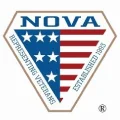Absolutely the best attorney for getting your VA benefits. After 7 years of denial, I found Brendan Garcia of VetLaw, He reviewed my case, set up a plan , scheduled my video hearing in front of a Veteran law judge, flew out to Phoenix to be there with me during the hearing. Hired a doctor to help draft a report to help my case. When all the smoked cleared, I’m now collecting max disability monthly, back pay beyond my wildest dreams. Brendan Garcia never stopped. He is an expert in Veterans law. Best decision of my life was to have him on my side. Bar none, Brendan is a terrific VA benefits attorney!
Understanding Your Neck Pain VA Rating
FACT: A service-connected VA disability for neck pain is no joke. No one wants to spend their day dealing with pain. You served your country. You entered service with pride and strength. You had to sacrifice — and you did so with thoughtless courage. Your family and friends bragged about how you went above and beyond. Now, you’re dealing with the aftermath of a service-connected neck injury. That last one wasn’t quite a part of the plan. It never occurred to you that you would still be fighting… Except this time you’re fighting a denial on your neck pain claim from Veteran Affairs for the benefits you earned.
This isn’t about entitlement (although, you are entitled to these benefits). No, this is about promises you received when you enlisted. This is about being taken care of by your country—a country you so selflessly served. At VetLaw, we 100% understand what you are going through. We are military veterans as well. We’ve helped thousands of military vets get the VA benefits they deserve. We can help you too.
HAVE YOU RECEIVED A DENIAL FROM VETERAN AFFAIRS FOR YOUR NECK PAIN CLAIM?
You have the right to appeal if you received a denial on your veteran disability claim for neck pain within the last twelve months (one year). However, even if your appeal period has expired, you can file a Supplemental Claim. If you did not receive your benefits and your appeal is successful, the award of benefits will include retroactive, or back pay. This lump sum payment includes all the cash you should have received from your date of claim, as long as you have not let the appeal period lapse.
LEARN WHAT IS THE AVERAGE VA DISABILITY RATING FOR NECK PAIN
The severity of your neck pain can be rated from 10% to 100%, depending on the limitation in your range of motion (ROM). ROM testing includes accounting for painful motion, as typically VA will concede functional loss at the point that painful motion begins.
The VA evaluates most neck pain issues using the General Rating Formula for Diseases and Injuries of the Spine under 38 CFR § 4.71a. Although the entire spine is covered under this Section, you can receive separate ratings for backaches or other lumbar spine disorders in addition to a rating for neck pain, or other cervical spine disorders. Your ROM measurements will be compared to the rating schedule as follows:
- 10% Disability: Forward flexion of your thoracolumbar spine between 60 degrees and 85 degrees; or that of the cervical spine between 30 degrees and 40 degrees; or the combined ROM of the thoracolumbar spine between 120 degrees and 235 degrees; or the combined ROM of the cervical spine between 170 degrees and 335 degrees; or guarding, muscle spasm, or localized tenderness that do not affect gait or the contour of the spine.
- 20% Disability: Forward flexion of your thoracolumbar spine between 30 degrees and 60 degrees; or the forward flexion of the cervical spine between 15 degrees and 30 degrees; or the combined ROM of the thoracolumbar spine less than or equal to 120 degrees; or the combined ROM of the cervical spine less than or equal to 170 degrees; or muscle spasm or guarding serious enough to warrant an abnormal spinal contour or gait.
- 30% Disability: Forward flexion of the cervical spine less than or equal to 15 degrees; or favorable ankylosis of the whole cervical spine.
- 40% Disability: Unfavorable ankylosis of the whole cervical spine; or forward flexion of the thoracolumbar spine less than or equal to 30 degrees; or favorable ankylosis of the whole thoracolumbar spine.
- 50% Disability: Unfavorable ankylosis of the whole thoracolumbar spine.
- 100% Disability: Unfavorable ankylosis of the complete spine.
As you can see, the percentage awarded for your condition increases when you are more immobile, your range of motion decreases, or your natural stance locks at an unnatural angle.
COMMON CAUSES OF SERVICE-RELATED NECK PAIN
Car accidents cause the bulk of neck injuries, and even an off-duty injury can qualify you for service connection, if it occured while you were on active duty. A fender bender can jar your back and neck in the wrong way, leaving you with long-term problems.
Collision with other trucks, explosions, off-road dangers, sliding into holes, and other risks might hurt your neck when patrolling.
Sudden deceleration or acceleration may have caused your neck condition while on duty. If you hurt your neck while serving, you should be eligible for neck pain VA disability payments.
HOW IS SERVICE CONNECTION ESTABLISHED FOR NECK PAIN?
If you can prove that your neck pain resulted from your experience in the military, you could qualify for service-connected benefits. Obtaining service connection for your neck discomfort is similar to other disabilities.
Your doctor’s diagnosis, proof of an in-service incident or origin of your ailment, or a nexus linking it to your time in the service are all acceptable as evidence for your claim.
The VA may seek a compensation and pension (C&P) exam to establish your neck problem and its relation to an in-service occurrence. Once the VA examiner finishes their evaluation, they will send VA a copy of their report and a nexus opinion stating whether they consider your disability to be service-related. The report will either note that “it is at least as likely as not” or that “it is less likely than not” due to your active duty service. A positive C&P nexus opinion can help you establish service connection, while a negative nexus opinion will likely result in a denial of VA benefits, resulting in the need to appeal that decision.
WHY SHOULD YOU CONTACT US ABOUT YOUR NECK PAIN APPEAL?
By signing with us, you can rest in knowing that all you have to do is show up for any required medical exams. We will charge you a fee only when we are successful in getting your compensation. We also endeavor to do all we can to ensure that you get the compensation you deserve for the physical impairments you suffered while fighting for our country. From ensuring that we give you proper counsel and guide you through the process of making a successful claim, to representing you in any formal hearings, we are ready and more than willing to help. Contact our VA physical condition claim attorney today to tell us about your neck pain issue and your time in service.









